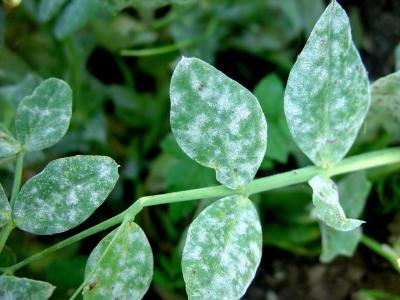Credits:Biovision-Infonet

(c) A. M. Varela, icipe
Symptoms first develop as a whitish talcum-like powdery growth on upper leaf surface. The powdery growth is composed of fungal spore mass. These areas covered by white powdery growth may enlarge and join up to cover both lower and upper leaf surfaces. Severely affected leaves dry, turn brown and become brittle. Vines can be also attacked. Secondary effects of the disease include sun-burning and premature ripening of fruits.
Powdery mildew affects cucumber, gourd, muskmelon, pumpkin, squash and watermelon. Other hosts include African violets and pawpaws. The powdery mildew fungi are influenced by plant age, humidity and temperature. Foliage is most susceptible 16 to 23 days after unfolding. The fungi reproduce under dry conditions. Infection increases as humidity increases, but does not occur when leaf surface is wet. Optimum temperature for infection is about 27.4degC . However, infection can take place at a temperature as high as 32degC and relative humidity as low as 46%.
What to do:
- Use resistant varieties, if available.
- Spray with sulphur based organic fungicides, which provide good control.
- Destroy weeds belonging to the cucurbit family.